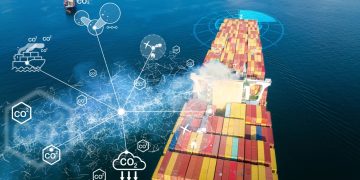According to the Ministry of Shipping, the policy for reimbursement of freight for movement of phosphatic and potassic (P&K) fertilizers under the Nutrient Based Subsidy (NBS) Policy and for urea has been extended to movement by coastal shipping and inland water transportation. The subsidy that was earlier only applicable to the movement of fertilizer by rail from the plant or the port to various rake points in various districts, will now also apply to the movement of fertilizers through coastal shipping and inland waterways.
This would promote transportation of fertilizers through coastal shipping under the Ministry of Shipping’s flagship programme Sagarmala. The Origin destination study conducted as part of the progarmme identified that the total opportunity for coastal movement of fertilizers is 9-10 MTPA by 2025, with an estimated savings of around 900 Crore to 1,000 Crore per annum.
The demand for fertilizer has grown along with the demand for food. Currently India imports 28 MMT of finished fertilizers and raw materials with Andhra Pradesh, Gujarat and Odisha being the biggest clusters. Kakinada, Mundra and Kandla will continue to be the largest finished fertilizer importing ports, while Paradip, Kandla and Vishakhapatnam will be the largest fertilizer raw material–importing ports. Fertilizers constitute about 2 percent of the total cargo handled at ports in India.
In the last five years, the consumption of fertilizers has increased by around 2.5 percent and is expected to rise at approximately 4 percent in the future. It is estimated that the volume of imports of fertilizer raw materials and finished products will grow at around 4 percent, keeping the volumes handled at Indian ports fairly stable by 2020.
Coastal shipping and inland waterways currently form around 7 percent of the total modal mix in India, compared to around 10–20 percent for other emerging countries like China. While rail is currently the primary mode of transport for long-distance fertilizer movement, analysis indicates that a modal mix shift towards coastal shipping can significantly reduce costs. Coastal plants in Andhra Pradesh and Gujarat have the potential to coastally ship their products to the peninsular states.
If key rail movements are considered to be from the major fertilizer plants to the top-200 fertilizer-consuming districts in the country, around 10 plants have the potential to shift to coastal shipping. Fertilizer corporations with multiple plant locations across the country seem to have the highest potential to leverage coastal shipping (e.g., IFFCO and RINL). The revision in the existing NBS policy, would help in decongesting the rail & road network and would help in bringing down the logistic costs.
Source: Ministry of Shipping































































